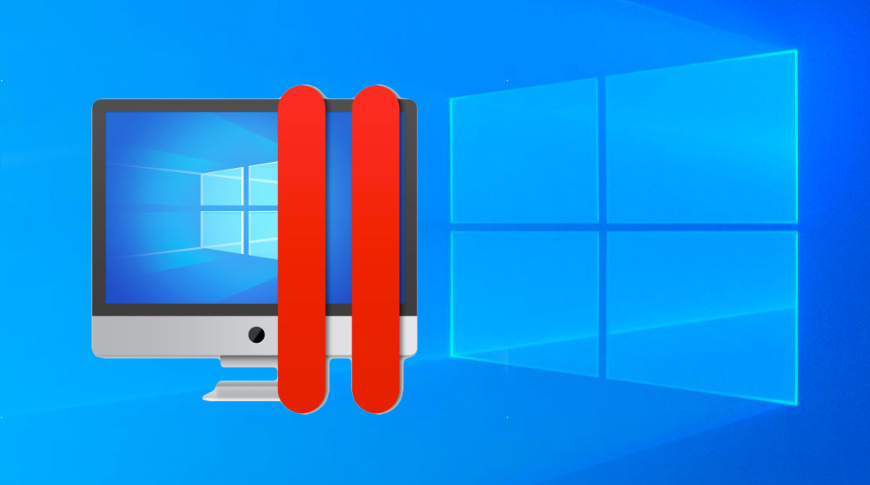Optimized for the latest Windows 10 updates, macOS Catalina and macOS Big Sur 11 Includes Parallels Toolbox–essential utilities for your Mac and PC Run thousands of Windows programs on your Mac Moving from PC to Mac is easier than ever.
Parallels Desktop and macOS Big Sur Apple has at last released macOS Big Sur! First previewed at the Apple Worldwide Developers Conference in June 2020, and then finally released to the world in November 2020, macOS Big Sur has had the longest beta development cycle of any macOS release in recent history. I installed Big Sur public beta as a VM in Parallels 15. Booting up and logging in fine, but display is stuck at 1024x768. I tried installing parallels tools but that made it not be able to boot, so I had to re-install Big Sur as a VM. So I am on a clean install but the graphics are poor. Parallels today announced the release of Parallels Desktop 16.5 for Mac. The ability to run macOS Big Sur in a virtual machine is a feature that Parallels hopes to add support for in Parallels. “Fully integrating macOS Big Sur is an exciting new chapter for Parallels Desktop and will bring an even more robust experience to our customers,” said Nick Dobrovolskiy, Parallels Senior Vice.

Parallels On Big Sur M1
Apple’s “one more thing” event on November 10, 2020, revealed the first Mac computers powered by the Apple M1 chip.
Parallels is excited to see the performance, power efficiency, and virtualization features that are brought to the Mac with the Apple M1 chip. The transition to Mac with the M1 chip should be smooth for most Mac applications, thanks to Rosetta technology. Fortunately, Parallels Access™, Parallels® Toolbox, and Parallels® Client software worked smoothly as universal binaries even before Parallels rebuilt them. However, virtual machines are an exception and Parallels engineers proactively implemented native virtualization support for Mac computers with the M1 chip. This enables our users to enjoy the best Windows-on-Mac experience ever.
Learn more about the new version in this blog post.
When Apple Silicon Mac was first announced during the keynote at WWDC on June 22 of this year, Apple demoed a Parallels Desktop for Mac prototype running a Linux virtual machine flawlessly on Apple Silicon. Since WWDC, the new version of Parallels Desktop, which runs on Mac with the Apple M1 chip, has made tremendous progress. We switched Parallels Desktop to universal binary and optimized its virtualization code; Apple M1 Mac computers and macOS Big Sur became available, and Microsoft announced and then introduced support for x86_64 applications in Windows on ARM Insider Preview.

As our customers know, Parallels cares deeply about the quality of our software products and the experience they provide. With macOS Big Sur and the new Mac with Apple M1 chip available, we continue to conduct more extensive evaluations, both in our lab and with your help via the Parallels Technical Preview Program. More than 100,000 M1 Mac users tested the Technical Preview of Parallels Desktop 16 for M1 Mac and ran Microsoft’s Windows 10 on ARM Insider Preview, as well as tens of thousands of different Intel-based Windows applications—including Microsoft Office for Windows, Microsoft Visual Studio, SQL Server, Microsoft PowerBI, and MetaTrader.
We received enthusiastic feedback about the remarkable performance of both the Technical Preview of Parallels Desktop 16 for M1 Mac and Windows 10 on ARM Insider Preview as well as x86 applications and the games inside it, including Rocket League, Among Us, Roblox, The Elder Scrolls V: Skyrim, Sam & Max Save the World, and many others. Testers loved Parallels Desktop’s easy to use features, and seamless integration of Windows and its applications with macOS Big Sur, which increased their productivity.
Install Big Sur On Parallels
On April 14th 2021, the new update for Parallels Desktop 16 for Mac was released and now features support for both Mac computers with Intel processor as well as Mac computers with Apple M1 chip.
Guest blog post from Dmitry Geynisman, Product Manager at Parallels
You may have seen these messages from both macOS and Parallels Desktop for Mac:


No worries, in this blog post I will explain the situation in detail. First, I will give you a relatively short answer about why Parallels® Desktop uses system extensions, and then more details will follow.
- Parallels Desktop uses a hypervisor technology to create a high-performance virtual machine, so you can run Windows, Linux, macOS, and other operating systems inside it.
- There are 2 types of hypervisors on macOS that Parallels can use: Apple’s built-in hypervisor or Parallels’ proprietary hypervisor. Parallels proprietary hypervisor is implemented as a system extension.
- System extensions in macOS enable developers to integrate deep into the macOS system to achieve better performance or provide some unique functionality.
- When Parallels Desktop attempts to load the Parallels hypervisor system extensions, macOS prompts a user to ‘allow’ this. System extensions have elevated privileges and if they are coming from a non-trusted source, can be used maliciously. So, it is a security precaution, similar to how your phone apps ask to access your camera.
If you downloaded Parallels Desktop from parallels.com and the system extension is signed by “Parallels International GmbH”, then you are in good hands.
- Parallels recommends you use Apple’s built-in hypervisor. That way macOS won’t bother you with System Extension approval or the need to reboot. However, if you need to use the Nested Virtualization feature or a specific workload where Parallels hypervisor shows higher performance scores, you may keep using Parallels hypervisor.
- To change a hypervisor type, first, you need to shut down or stop your virtual machine. Note that for this you might need to start or resume the virtual machine and approve Parallels hypervisor system extension.
When your VM is stopped, go to VM configuration > Hardware > CPU & Memory > Advanced Settings > click on the “Hypervisor” dropdown > select “Apple” or “Parallels” respectively.
If you have multiple virtual machines, you may need to change the setting for every one of them.
Now, if you’re not bored yet, I’d love to tell you more about this story.
For more than a decade, Parallels developed its proprietary drivers (aka system extensions) for running Windows and other OSes on top of the macOS. These drivers made Parallels Desktop the best virtualization solution, the fastest, and the most technologically advanced.
At the same time, for several years, Apple has been moving towards making macOS the most secure and reliable desktop OS (and I should say, Apple succeeded in many ways). One of the key aspects is not to let developers intrude on the OS kernel by loading those extensions (aka “kexts”), as those who have access to the kernel can do things at the very heart of your Mac, which may prove quite dangerous. In order to do that, Apple must replace 3rd-party kernel extensions with the native system APIs that ultimately enable the same product features, and that is massive engineering work even for such a big enterprise as Apple.

Parallels Desktop On Big Sur
Since 2017, with the macOS High Sierra 10.13 release, Apple started to block 3rd-party kexts automatically, and users have had to enable them manually since. At that time, we published this blog post that can tell you even more about Parallels Desktop using system extensions.
In March 2020, with the release of macOS Catalina 10.15.4, Apple started to warn users that some of their apps (that use deprecated system extension) would “be incompatible with a future version of macOS” (read: with macOS Big Sur).
At WWDC20, Apple was quoted as saying that “System Extensions improve the reliability and security of macOS, and deprecated kernel extensions will not load by default in macOS Big Sur”. Eventually, to make Parallels Desktop fully compatible with the new macOS Big Sur 11.0, Parallels Engineering has gone through years of engineering work of rebuilding Parallels Desktop and its features using the new macOS system APIs. This extensive and time-intensive development resulted in the all-new Parallels Desktop, explicitly designed to work and integrate with new macOS Big Sur technologies, and at the same time, deliver performance and productivity improvements to benefit Parallels Desktop customers.
This scheme below visually describes the difference between the default Parallels Desktop modes on the corresponding macOS version. The old Parallels Desktop design using Parallels system extensions is shown on the left, and the newly-invented Parallels Desktop 16, using macOS Big Sur APIs, is shown on the right.
For now, our team continues to work on supporting both Parallels and Apple hypervisors and continues collaborating with Apple on implementing the rest of Parallels Hypervisor features to Apple Hypervisor. We recommend using Apple hypervisor, and if you notice any difference between Apple and Parallels hypervisors for your use case, please let us know.
Download a free trial of Parallels Desktop for Mac and try it out yourself.




